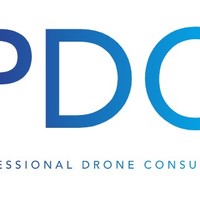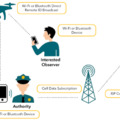Several UAS operators raise the issue, that what s/he can do if the location and/or time of the given mission is not known in advance. The so-called generic operational authorisation offers flexible usage for them and those UAS operators who do not want to gain an operational authorisation for a particular event at predefined locations and periods.
This operational authorisation allows the UAS operator to work freely and flexibly to conduct operations. Thus, the operations are not limited to either a particular and predefined location or locations or a period. Operators have the possibility to conduct missions in as many locations as they can in a geographic boundary (country border or smaller territorial units) until they fulfil the limits set in the operations manual (OM). These limits are regarding ground and air risks and are described by general air and ground characteristics. The primary prerequisite of the issue of these authorisations is a well-determined ground and air risk maximums determined by the operator. Within these limits, the operator can guarantee the safety of the operations by fulfilling the risk mitigation measurements and the operational procedures. Therefore, the operator has to specify the procedures for the assessment of a potential UAS mission site.
With a generic operational authorisation:
- UAS operators can perform unlimited operations permitted by the authority within the period of validity of the authorisation.
- UAS operator can perform operations at those locations that satisfy the ground and air characteristics set in the OM – they are not previously reported locations, but the sum of all possible locations that fulfil the limits of ground and air risks approved by the authority (e.g. population density, airspace class, maximum altitude, minimum distance of adjacent areas and airspaces, etc.).
- Only those UASs can be used that are indicated in the OM. In the OM, the operator has to list the applicable UASs with their registration marks.
- The operator has to assess the location and the circumstances of the operation in advance and determine whether the operation is feasible or not by using risk mitigation measures. Only those missions are feasible that are below the authorised risk level.
- The preparation and the fulfilment of the missions should be documented in detail, and these documents should be presented in case of an authority audit.
UAS operators with generic operational authorisations are also subject to a risk-based oversight programme by the competent authority (civil aviation authority). The authority periodically reviews the mission logs based on the safety performance history of the operator and to ensure that all aspects of the operations comply with the legal and internal operator requirements. In all cases, the frequency of inspections will be in line with the authority's own inspection cycle, which is typically 24 months.
When the missions should be controlled by other authorities too, then these authorities can also conduct inspections and audits that can be pre-announced or random (ad-hoc).
Benefits of the generic operational authorisation:
- UAS operator can even be a legal or private person.
- It is not necessary to have an operational authorisation for each mission.
- The UAS operator does not have to use an aviation safety management system. Therefore, the construction of the submitted documents is easier.
- The authorisation process is shorter compared to the light UAS operator certificate.
- Useful for UAS operators who want to conduct operations based on STSs or PDRAs. Conditions in the operational authorisation are similar to those in the STS. Thus, their fulfilment can easily be granted.
- In one authorisation, multiple types of operations can be authorised, but all operational types should be elaborated in one OM.
The authority may issue a generic operational authorisation for all use cases and periods, described by general circumstances based on the assessment of the submitted evidence, but it might also use a step-by-step approach. The latter, the authority will continuously monitor the aviation safety performance of the operator, and based on the results, it will revoke the restrictive conditions that may limit the operations step-by-step. This positive aviation safety performance may be used in an LUC application if the UAS operator would like to get this kind of authority.
Generic operational authorisation can be used in the case of operations with low-risk levels only (SAIL of the operations must be I or II).
The issued operational authorisation can be limited in time, in space, or unlimited. This is up to the evidence submitted by the operator, based on the decision of the authority. To gain a timely unlimited authorisation, the operator should demonstrate that it will continuously refresh its knowledge and operational procedures – if applicable – and apply remote pilots with the necessary and proven knowledge (with refreshment training, too).



